The location of the gas stove in relation to household appliances and furniture
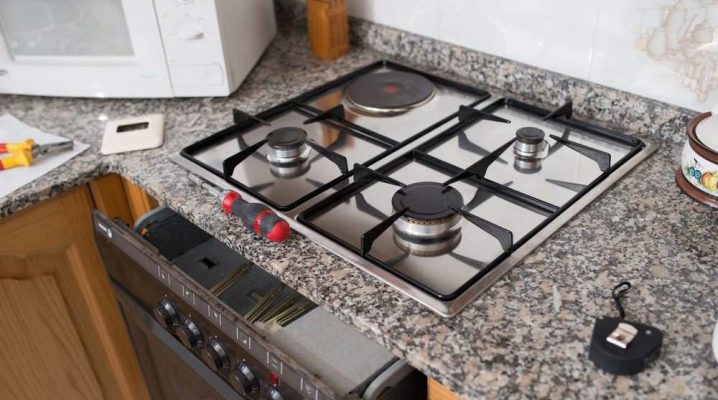
The kitchen can rightfully be called an office for every housewife: here she creates her masterpieces, all her family members gather here, most of any mother's time passes here. However, the kitchen is considered a hazardous area, and the main source of it is the gas stove. This fact must be taken into account when arranging furniture and household appliances.
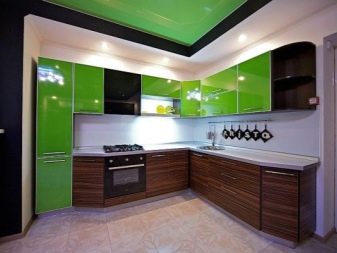

Neighborhood with a washing machine
All modern stoves, with the correct method of operation, can heat adjacent surfaces to no more than 90-95 degrees. But if you decide to heat the room with the help of gas burners or dry the laundry in the kitchen, then in this case the nearest surfaces will already heat up to 150-200 degrees. Thus, the outer surface of a washing machine or refrigerator can be damaged and yellowed in no time.
According to modern safety requirements, the minimum distance between the stove and nearby appliances or furniture should be at least two centimeters, and if we are talking specifically about a washing machine, then the distance from it should also be within these limits, since it will vibrate during operation.


It is best to separate the working areas of the stove and washing machine. If you do not have such an opportunity, then you should provide for a gap between them (best of all 5 centimeters) and install an asbestos slab in the gap, or at least make a transition from one surface to another from this material.
In general, there is rarely a need to put such household appliances close to each other. However, if this is exactly your case, then it is worth thinking 100 times - will there be more benefit or harm with such a neighborhood: installation of additional heat-resistant material, gaps, a high probability of ruining the surface of the washing machine, etc.
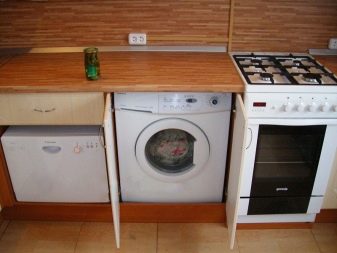

Placement near the refrigerator
A gas stove and a refrigerator are two units that are completely different in their meaning. One is for cooling and freezing food, the other is for heating and cooking it. If you place them side by side, then the cold when opening one will collide with the heat and heat from the other.
The refrigerator will suffer in the first place, since the side that is closest to the stove is doomed to yellow over time, the handles will crack, and rubber seals can also become unusable due to temperature changes, ceasing to perform their main functions. The higher the temperature near the refrigerator, the faster the compressor starts to work, thereby increasing the likelihood of its early wear. In addition, there is an increased consumption of electricity.


Ideally, the distance between the stove and the refrigerator should be at least 15 or even 25 centimeters.
A pull-out shelf, a small cabinet, or any other attribute of kitchen furniture, which can fulfill its mission of storing utensils or serve as an additional work surface for cooking, can act as a barrier between them.


One has only to imagine the proximity of these two foundations of any kitchen and immediately a picture appears in front of your eyes: the handles of pans or pots rest against the wall of the refrigerator, food splashes fall as yellow spots on the surface. Few people like this situation, and the hassle of cleaning will increase. Conclusion - a gap is definitely needed, and it is better not less than 50 centimeters, so that it can also be used for improvised items.
Of course, if we are talking about a very tiny kitchen, where all ideas are limited to square meters, this arrangement is extremely undesirable. Here, between the gas stove and the refrigerator, you can put a protective insulation (screen) in the form of tempered glass or the same asbestos insert at least 50 centimeters above the level of the gas appliance.
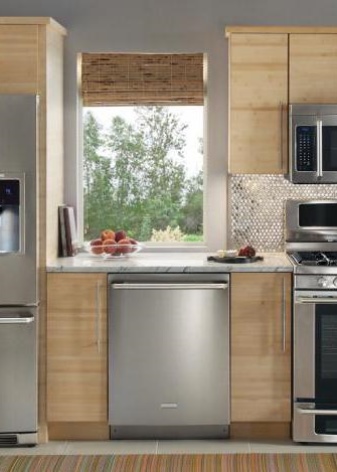

Additional Tips
Before arranging the furniture, you must think over the final version of the kitchen interior to the smallest detail. To do this, you need to decide what material your ceiling will be from, what will be on the walls, on the floor, from what material it is worth ordering furniture, where sockets and household appliances will be located.
It's worth starting from the ceiling. The most popular are now stretch coverings, do not be afraid to make them in the kitchen. One of the most correct solutions would be to protect any ceiling, including a stretch one, with an extractor hood located over the gas stove... It will not only isolate the area of heat and possible splashes of fat and oil from the area of the clean ceiling, but will also absorb all odors and steam.
Do not hang a cabinet or shelves over the stove. Over time, they will darken and become covered with a coating, which will turn your life in the kitchen into endless washing of walls and shelves on top.
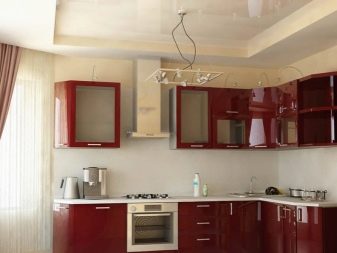

The gas stove must have a protection screen. Most often, it is located on the back wall of the gas stove and performs a thermal insulation function in relation to the wall, and also protects it from splashes during cooking.
It is highly discouraged to place the stove under the gas meter. The meter should be located to the side and at a distance of at least 10-15 centimeters from the device.
Placing the stove next to the sink is also not a good option. Splashing on the cooking zones can extinguish the fire and there is a danger of gas leaks. In addition, you can simply burn your hands if there is hot dishes nearby, boiling water or oil. The greater the distance between the stove and the sink, the more comfortable it will be for the hostess herself.
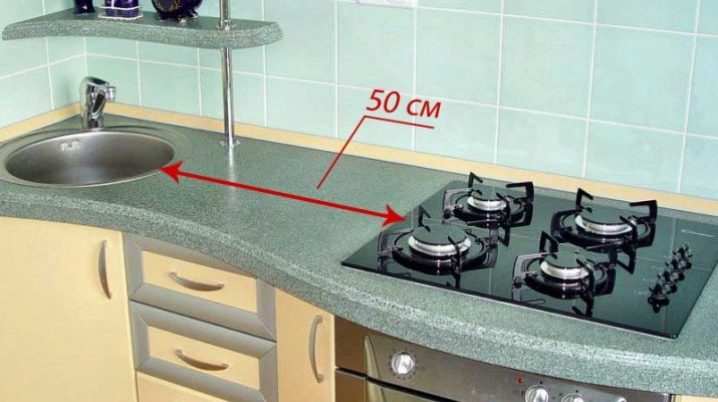
If your stove will be located between the elements of the kitchen set, then do not install a microwave oven, blender, coffee machine and other household appliances close to it... This close proximity will result in permanent greasy stains that will be difficult to clean on a daily basis, and you will simply ruin the appearance of such essential items. If the countertop is too close to the stove, then there is a possibility that in the near future it will simply crack or lose its color.
Do not forget about the standard distances between the stove and other objects. Move furniture at least 5 centimeters from each edge of the slab. Between the stove and other pieces of furniture, you can make aluminum inserts... They will prevent food from falling to the floor and protect furniture surfaces located in the immediate vicinity from heating.
Usually, the instructions for the gas stove contain the requirements for its installation and additional thermal insulation.


Despite the fact that modern stoves are equipped with thick walls made of special materials and fans for faster cooling of an oven that is already turned off, it is still a prerequisite for their placement. air gap small width, which has already been mentioned several times above. It will not allow gas to accumulate behind the stove with small leaks. Therefore, when installing the stove, it is worth considering all the nuances that, first of all, guarantee the safety of you and your loved ones.
Most often, the stove is placed in the middle of the kitchen unit. There are certain pros and cons of this neighborhood. In any case, it is worth starting from all the nuances discussed above, as well as the size of the kitchen and your material capabilities.This will help you choose the most optimal option for placing the stove in relation to household appliances and kitchen furniture.
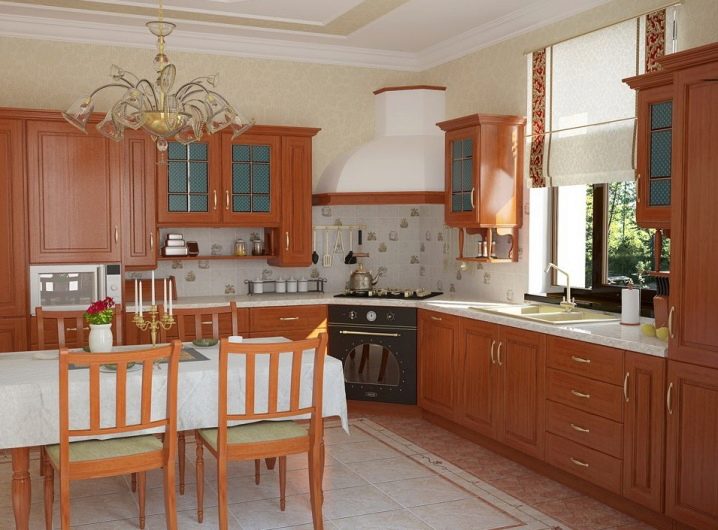
It is unlikely that it will be possible to completely isolate the gas stove from the kitchen set, so just do not forget that there should be an air gap and a hood and should not be too close to household appliances, furniture and a meter. Consider all these tips and do not forget that the kitchen is the place where we spend most of our time at home, so it should be functional, comfortable and safe at the same time.

All about gas stoves and hoods, see the video below.













The comment was sent successfully.